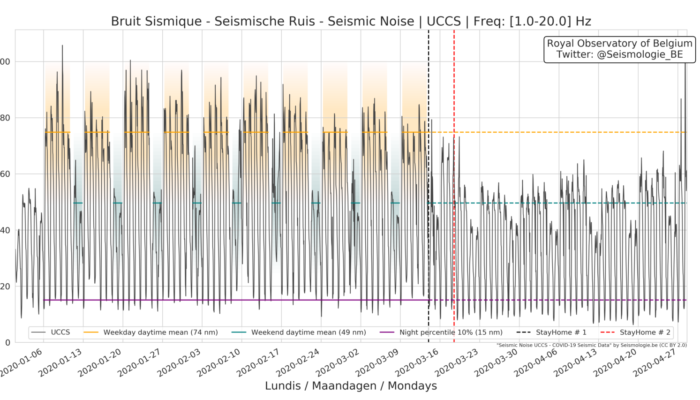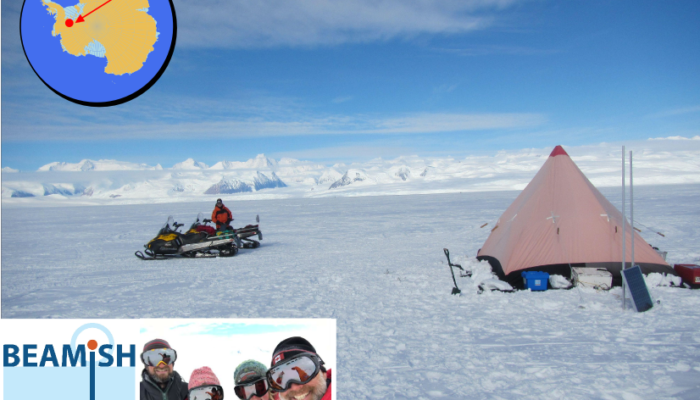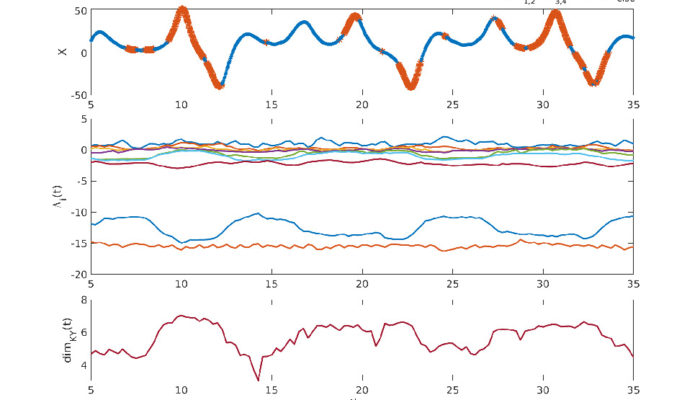As lockdowns have come in place all over the globe, workplaces have closed, people are sticking to their homes, and perpetual traffic jams have reduced to a trickle [1]. This results in eerie sights, where the lone bypasser walking through deserted streets cannot but wonder whether they’ve accidentally missed the memo on the apocalypse. The world is coming to a halt and this results in… sil ...[Read More]
Geodynamics
#shareEGU20_GD: online EGU General Assembly highlights
In response to the growing concerns over the COVID-19 epidemic, EGU has cancelled the physical General Assembly in Vienna and will instead host EGU 2020: Sharing Geoscience Online (#shareEGU20), a week-long series of online activities during which attendees can remotely interact, discuss and share research. With the virtual GA looming in less than a week, it’s time for all attendees to finis ...[Read More]
Geodynamics
Join the EGU GD Blog Team!
We are looking for both regular editors and Sassy Scientist columnists for the new ‘EGU year’ (which, by our definition runs from the week after EGU GA 2020 up to and including EGU GA 2021, i.e., May 11, 2020 – May 2, 2021)! Being an editor is lots of fun and you will be welcomed in a small, but dedicated team. You will have the opportunity to meet lots of people from the geodyna ...[Read More]
Tectonics and Structural Geology
Features from the field: crenulation cleavage
In one of the former episodes of the ‘Features from the field’ series we have talked about foliations, and how they develop when rocks are pushed together by the movement of tectonic plates. It is quite uncommon, however, that tectonic forces are active in the same direction for an unlimited period of time. The rule, rather than the exception, is that the orientation of tectonic forces ...[Read More]
Cryospheric Sciences
Icequakes, the little brothers of earthquakes, what do they tell us about ice flow?
Each day, several tens of tiny earthquakes happen beneath Rutford Ice Stream in Antarctica. These events are so small that no human would be able to feel them – yet, scientists can use recordings of these so-called “icequakes” to obtain valuable information on the way ice flows in Antarctica. Read on to find out how… What are icequakes? So we’ve all heard of earthquakes, but what ...[Read More]
Seismology
Back to normality (?)
I imagine that in a couple of months European countries will give the green light: the restrictions and social-distancing will be relaxed and people will step out of their houses. Blinking into the bright summer sunlight in the Northern Hemisphere, they will lift a hand towards the sun to shield their sensitive eyes unaccustomed, after weeks and months of lockdown, to the natural light. Pe ...[Read More]
Geodynamics
The Sassy Scientist – Mic Muting
After asking many times whether or not I can hear him and just generally struggling to communicate, Noel finally manages to ask: On average, how many times is ‘Can you hear me now?’ uttered during a conference call? Dear Noel, Unlike the ritual of – the almost spiritual – sharing of screens, the accidental muting of the microphone and the associated questions varying on the theme of &# ...[Read More]
Nonlinear Processes in Geosciences
NPG Paper of the Month: “Application of a local attractor dimension to reduced space strongly coupled data assimilation for chaotic multiscale systems”
This month the NPG Paper of the Month award is achieved by Courtney Quinn for her paper “Application of a local attractor dimension to reduced space strongly coupled data assimilation for chaotic multiscale systems” (https://www.nonlin-processes-geophys.net/27/51/2020/). Dr. Courtney obtained her PhD in Mathematics at the University of Exeter (UK) researching critical transitions in dynamical syst ...[Read More]
Geodynamics
Geodynamics – What does it really mean?
We are all studying geodynamics, but what does that really mean? Do we limit ourselves to the mantle? The lithosphere? The equations we solve? In this Wit & Wisdom post, Colin Hardy, PhD student in fluid dynamics at the University of Leeds, United Kingdom, makes his case for an often forgotten boundary condition of mantle geodynamicists: the core. Let us start with the basics and break down th ...[Read More]
Tectonics and Structural Geology
#ShareEGU20: An online EGU General assembly?
In mid-March it was decided that the EGU conference in Vienna was to be cancelled, with an alternative proposed, the online GA. Being the first EGU general assembly to be held online, many people are doubtful about many aspects, such as how the conference will be organised and conducted. EGU has been providing answers to questions on their page and on Geolog, and we thought we would provide some h ...[Read More]










